Mid Japandi is a unique fusion of Mid-Century Modern design and Japandi aesthetic.
Japandi, as some of you may know, is a combination of Japanese and Scandinavian design elements. It brings together the Scandinavian love for clean lines and functionality with the Japanese penchant for simplicity and balance. Mid-Century Modern, on the other hand, is a style born out of the mid-20th century that carries an enduring love for organic shapes, craftsmanship, and the thoughtful use of materials.
When these two distinct styles converge, we get Mid-Japandi. It’s about creating spaces that are functional and aesthetically pleasing, yet grounded in a respect for nature and the beauty of raw materials.
Mid Japandi features a soothing color palette, mostly filled with neutral, earthy tones, but isn’t afraid to introduce waves of muted color, typically found in Mid-Century Modern designs. There’s an emphasis on simplicity and minimalism, but with a warm and inviting atmosphere created through organic shapes and textures.
The furniture is often low to the ground, following the traditional Japanese design style, but you’ll also find iconic Mid-Century pieces—think Eames chairs and George Nelson benches—gracing these spaces. There’s a lovely balance of form and function that is both calming and visually stimulating.
But in essence, Mid Japandi is more than just a design trend—it’s a lifestyle. It encourages mindfulness, tranquility, and the thoughtful use of space. It’s about respecting the artistry that goes into creating furniture and decor pieces, and acknowledging the beauty of raw materials. Our homes should be spaces of calm and simplicity that inspire creativity and comfort.
So, in the whirlwind of our busy lives, Mid Japandi offers a serene, inviting oasis.
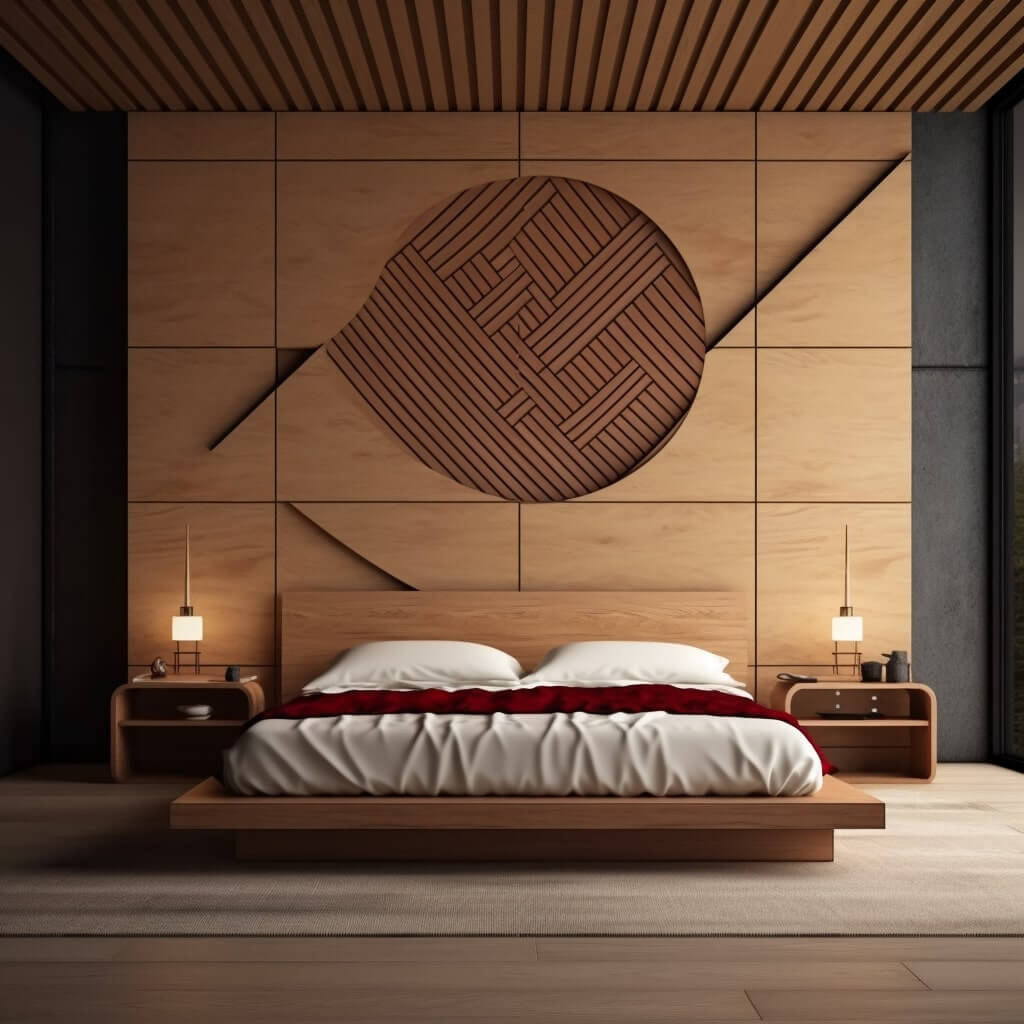
The Origins of Mid-Japandi
As an interior design enthusiast, I find it fascinating to delve into the origins of new trends. Mid-Japandi is no different. It’s an intriguing blend: where East meets West, with a pinch of vintage appeal.
The term ‘Japandi’ first began circulating in the design world around the 2010s, as people started to appreciate the similar ethos that Japanese and Scandinavian design share. Both of these design philosophies value simplicity, functionality, and a deep connection to nature. This blend offers a soothing minimalism that was quickly embraced globally.
Mid-Century Modern, on the other hand, is an older style that took root in America around the mid-20th century. Its origins trace back to the post-WWII period, when design began focusing on simplicity and functionality, just like Japandi, but also celebrated forms inspired by nature and the use of new materials and technologies of the era.
The birth of Mid-Japandi as a distinct style, however, is a relatively recent phenomenon. As the 21st century progressed, we started to see a rise in the appreciation for designs that offer both minimalism and warmth. This made the fusion of Japandi and Mid-Century Modern almost inevitable.
People started blending the pared-back elegance of Japandi with the iconic, organic shapes and bold, yet understated colors of Mid-Century Modern. This resulted in an aesthetic that was clean and minimal yet warm and full of character – a balance that resonated deeply with modern sensibilities.
The concept of Mid-Japandi essentially embraces the best of three cultures
- Japanese
- Scandinavia
- and Mid-Century American
And creates a style that is contemporary yet timeless.
Key Elements of Mid Japandi
As someone who appreciates the beauty and balance of good design, the key elements of Mid-Japandi are incredibly appealing to me.
Simplicity and Function
Mid-Japandi is an embodiment of the phrase “less is more”. This trend takes the traditional Scandinavian and Japanese appreciation for simplicity and pairs it with the functional design aspects of Mid-Century Modern decor. Each item in a Mid-Japandi styled space is thoughtfully selected and placed, making sure it adds value to the room. There is no place for unnecessary clutter.
Natural Materials
Mid Japandi heavily emphasizes the use of natural materials, drawing on the Japanese respect for nature and the Mid-Century love for craftsmanship. This can be seen in the use of woods like oak, ash, and walnut for furniture, bamboo and rattan for accents, and natural fibers like cotton and linen for soft furnishings. There’s also a predilection for stone, ceramic, and terracotta, which brings an additional textural depth to these spaces. It’s about embracing the beauty of natural imperfections, or what the Japanese call “wabi-sabi,” and recognizing the uniqueness and life in each piece of wood, stone, or fiber.
Neutral and Earthy Colors
The Mid-Japandi color palette is mostly made up of neutral and earthy tones, creating a soothing and calming atmosphere. The style leans towards colors that can be found in nature—think different shades of greens, browns, beiges, and greys. There is also room for muted pastels and the occasional deep, rich hue, reminiscent of Mid-Century Modern aesthetics. .
.
Minimalism
Mid-Japandi embodies a minimalist philosophy closely related to the Japanese concept of “Ma”, or the appreciation of empty space. It’s not about creating stark, empty rooms, but instead about thoughtfully curating the space to ensure there’s room to breathe.
The Intersection of Mid-Century Modern and Japandi
I find it fascinating how different design elements can come together to form something new and exciting. The intersection of Mid-Century Modern and Japandi to form Mid-Japandi is a classic example of this. Mid-Century Modern is renowned for its celebration of post-war optimism.
Born out of the 1950s and ’60s, it highlights organic shapes, a wide range of materials including new synthetics, and bold, yet often understated, color palettes. This style was all about forward-thinking designs that were functional, simple, and beautifully crafted. Iconic pieces from this era like the Eames lounge chair or the Noguchi coffee table are known for their graceful lines, understated elegance, and usability.
On the other hand, Japandi is a newer trend that combines the minimalism and functionality of Scandinavian design with the elegance and respect for nature seen in Japanese aesthetics.
The fusion of these two styles leads us to Mid Japandi, which is truly a meeting point of East and West, past and present. It combines the organic forms and thoughtful design of Mid-Century Modern with the serene minimalism and nature-focused aesthetics of Japandi. It brings the vibrant optimism of the Mid-Century era into a modern setting, while also incorporating the serenity and balance of Japanese design principles.
Why is Mid-Japandi Trending.
I’ve found that the rise of Mid-Japandi reflects a broader shift in our societal values and lifestyle needs. The Mid Japandi trend is not just about aesthetic appeal—it’s a reflection of our evolving relationship with our living spaces, particularly in the wake of global events that have prompted us to spend more time at home.
In today’s fast-paced, technology-driven world, there’s a growing yearning for simplicity, calmness, and a deeper connection with nature, which is beautifully embodied by the Mid-Japandi style. The trend’s focus on minimalism and functionality resonates with those seeking to declutter their lives and create more mindful, serene living spaces.
Also, the trend reflects a growing appreciation for designs that are timeless and sustainable. The Mid Japandi style’s emphasis on craftsmanship, natural materials, and longevity aligns with a growing consciousness about sustainability and responsible consumption.
Moreover, the fusion of elements from different cultures in Mid Japandi resonates in our increasingly globalized world. It reflects a broader cultural exchange and mutual appreciation, extending beyond cuisine, fashion, and language into the realm of interior design.
So, why is Mid-Japandi trending? It’s a perfect storm of societal shifts, personal desires for calming spaces, sustainability, and a celebration of cross-cultural exchange. This is a design trend deeply rooted in the zeitgeist of our times.
How to Incorporate Mid-Japandi into Your Home
Whether you’re looking to revamp your living room, bedroom, or kitchen, I’ve got some ideas that can help bring the serene and sophisticated Mid-Japandi vibe into your space.
Living Room Ideas.
Start by decluttering the space and focusing on a neutral, earthy color palette. A soft grey, warm beige, or subtle green can serve as an excellent backdrop.
For furniture, select pieces with clean lines and organic shapes. A sleek, low-profile sofa in a neutral color, an iconic Mid-Century Modern armchair, and a minimalist coffee table with beautifully crafted legs can serve as focal points. Don’t forget to incorporate natural materials like wood, stone, or rattan. For example, a wooden bookshelf, a stone side table, or a rattan lampshade can add texture and warmth.
Lastly, a few green plants can bring life and a touch of color into the space. Abstract artwork in muted tones, a soft wool rug, or a few handcrafted ceramic vases can add character without overwhelming the space.
Bedroom Ideas.
Your bedroom should be a sanctuary, and the Mid-Japandi style can help achieve that. Again, start with a neutral color palette—soft whites, greys, and earthy tones can create a soothing atmosphere.
For the bed, consider a simple platform bed made from natural wood. Pair it with soft, organic cotton or linen bedding in neutral tones. Choose a bedside table that highlights craftsmanship, such as a Mid-Century Modern design with tapered legs.
In terms of decor, less is more. A single piece of minimalist artwork, a ceramic vase with a single stem, or a beautiful wooden tray can add a touch of elegance. Soft lighting from a sleek table lamp or floor lamp can enhance the calming atmosphere. Consider incorporating some greenery, like a potted snake plant or peace lily, for a refreshing touch.
Kitchen Ideas.
Bringing Mid-Japandi into your kitchen can create a space that is not only stylish but also practical. Begin with cabinetry that showcases natural wood, complemented by sleek, minimalist handles. Concrete or stone countertops can add a cool balance to the warmth of the wood.
Open shelving is a great way to showcase beautiful dishware while also keeping your essentials within easy reach. Choose dishes and accessories that highlight natural materials and craftsmanship—think ceramic bowls, wooden serving spoons, or a cast-iron teapot.
Use pendant lights with organic shapes for your lighting needs—they can add visual interest and are practical for tasks like cooking or cleaning. Keep the color palette neutral, but feel free to add a pop of muted color—perhaps a soft blue backsplash or sage green accessories.
Pros and Cons of Mid Japandi
Like all design styles, Mid Japandi has its pros and cons. While it is currently a highly favored design aesthetic, it may not be the perfect fit for everyone. Here’s a quick look at both the advantages and potential downsides to adopting this trend in your home.
Pros
- It’s easier to keep spaces tidy and ensures that every piece of furniture and decor has a purpose. It brings a sense of peace and tranquility to a space, thanks to its balanced approach to design. The use of natural materials, neutral colors, and minimalist aesthetics creates a serene environment that can help reduce stress and enhance wellbeing.
- The elements of Mid-Japandi design are enduring and unlikely to feel outdated quickly.
Cons
- For some, the minimalist approach of Mid-Japandi may feel too stark or impersonal. It lacks the eclectic vibrancy or cozy clutter that some other styles may offer, like boho styles for example.
- May not appeal to those who prefer bold colors or a wide range of hues in their decor.
- To maintain its minimalist ethos, Mid-Japandi requires careful selection and placement of items and this can be time-consuming.
FAQs
What is Retro Japandi?
Retro Japandi is a fusion of Japanese minimalism and mid-century Scandinavian design with a vintage twist. It adds retro elements and nostalgic charm to the calming, clean lines of the Japandi aesthetic.
What is Mid-Japandi interior design?
Mid-Japandi interior design merges Mid-Century Modern with Japandi. It combines the organic forms, functional design, and warm colors of mid-century aesthetics with the simplicity, balance, and respect for nature found in Japandi design.
What is modern Japandi style?
Modern Japandi style is a contemporary design aesthetic that blends Japanese and Scandinavian design philosophies. It features minimalist spaces, functional design, a neutral color palette, and a strong emphasis on natural materials and the appreciation of negative space.
What is the difference between Scandi and Japandi?
While both Scandi and Japandi emphasize simplicity, functionality, and minimalism, Japandi incorporates more elements from Japanese design, such as respect for nature, balance, and the appreciation of ‘wabi-sabi’ or imperfections, creating a more calming, serene atmosphere.
What age is mid-century?
Mid-century typically refers to the mid-20th century, particularly the period from the mid-1940s to the mid-1960s. This era saw a surge in forward-thinking, innovative designs in architecture, furniture, and graphic design, known as Mid-Century Modern.
What is a mix of Japanese and Scandinavian style?
A mix of Japanese and Scandinavian style is known as Japandi. It combines the minimalist, functional aesthetics of Scandinavian design with the traditional elegance, balance, and appreciation for nature seen in Japanese design.
What is Mid-Japandi furniture?
Mid-Japandi furniture blends the iconic forms and functional design of Mid-Century Modern furniture with the pared-back elegance of Japandi. It emphasizes natural materials like wood, clean lines, and a balance between form and function.
What is Mid-Japandi art?
Mid-Japandi art is a fusion of Mid-Century Modern and Japandi aesthetics. It often features abstract forms, organic shapes, and a muted, earthy color palette. The art pieces uphold the principles of minimalism, balance, and a connection to nature, typical of the Mid-Japandi style.


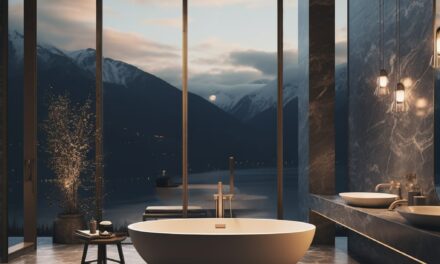




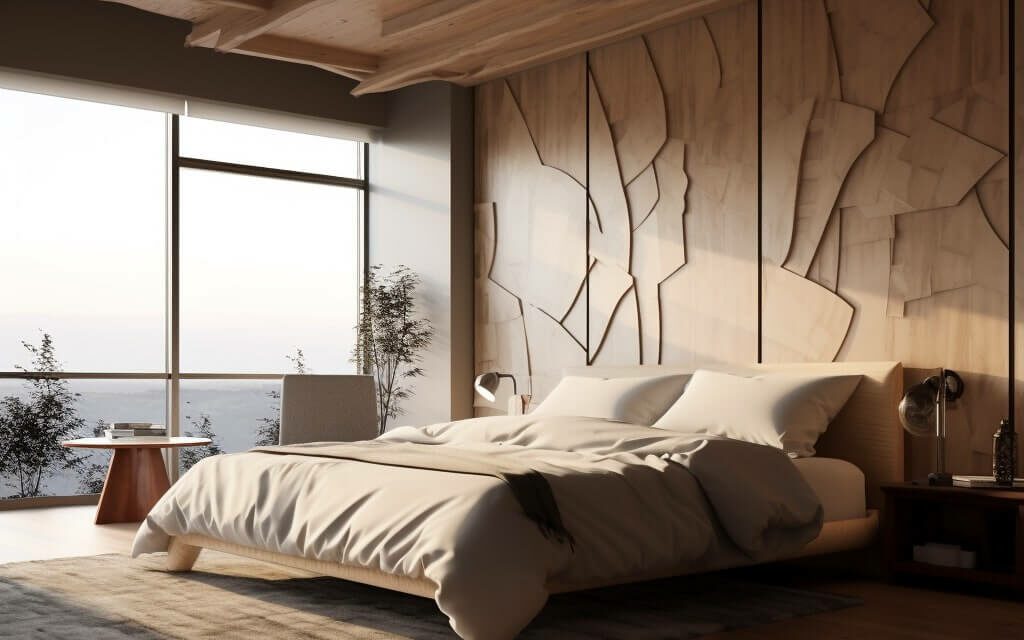
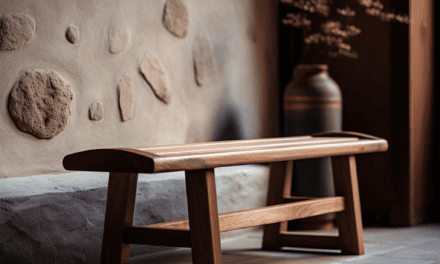
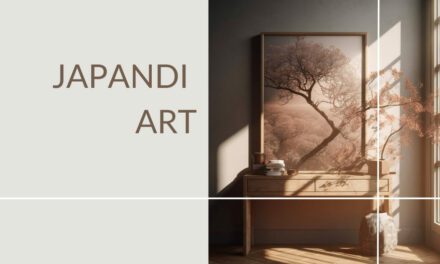
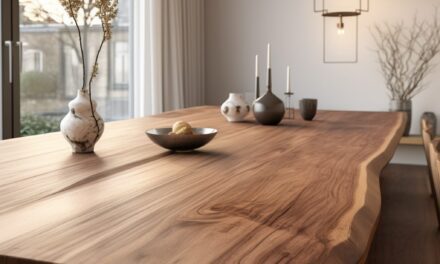

I really like your blog.. very nice colors & theme. Did you create this website yourself or did you hire someone to do it for you? Plz respond as I’m looking to construct my own blog and would like to find out where u got this from. thank you
Hi, I use WordPress and the Divi theme 🙂